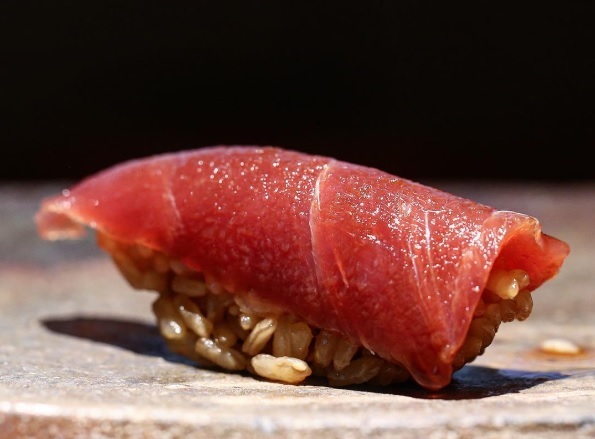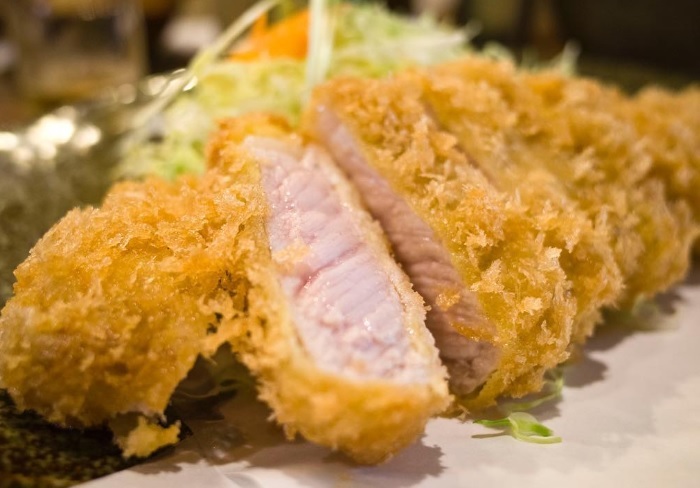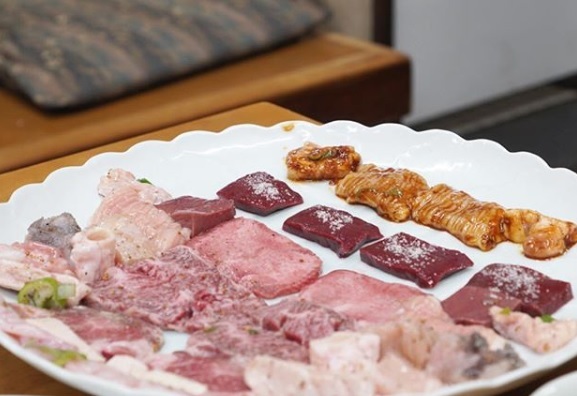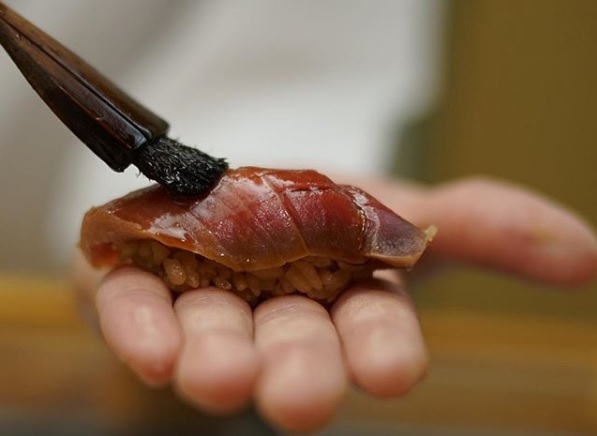The Best Sushi Restaurants, Quietly Located outside of Tokyo
As I walked from Tatebayashi station in Gunma to Sushi Obana, I couldn’t help feeling a bit worried. I asked myself many times if I had the correct address. It would be a major disaster if I got the address wrong as in that area, trains are less frequent. There was no way I could make it to the restaurant in time unless I got the address right. I rechecked the address many times when I was planning this visit, but as I approached the venue, I couldn’t help feeling that it didn’t look like there would be any sushi restaurant nearby. At the last turn around the block, I became even more nervous. I had reached the address, but it didn’t look like a sushi restaurant. It looked like a home office or a retail shop. I was prepared for the worst. I read the metal sign: It said Sushi Obana. What a relief! I had arrived 30 minutes before its opening time at 12:30.
When I walked in, I was greeted warmly by Obana-San and his wife, who are great hosts. Their warm hospitality put me at ease right away. In all top sushi restaurant, sushi chefs are in favor of warm lighting. Sushi Obana’s interior is unorthodox in that it is filled with lots of natural light. I’m surprised by how down to earth Obana-San is. Obana-San speaks good English and made a very kind effort to explain things, although it was obvious that he might not have seen many foreign visitors at his shop.
My meal started with Junsai, young lotus leaves commonly found in Zhe cai 浙菜 (one of eight major Chinese cuisines representing cooking in Zhejiang province), and abalone broth jelly, which opened my taste buds with natural umami flavor. It’s obvious that Chef Obana preferred his cooking to have all-natural flavors. Then, boiled Ezo abalone was served. Obana-San announced ‘this is my signature. No salt nor additives, just boiled.’ Abalone was soft and had natural deep umami flavor. Then, more o tsunami was served, including one of the biggest botan ebi. Its surface was so shiny. Then, he brought out a really beautiful box of uni with no. 1 sign. It must be auctioned as top quality from the market. He said something like ‘uni parfait’ and prepared uni on top of uni risotto. I enjoyed his o tsumami with all-natural flavors. His delicious Shako has lots of roe inside.
After a series of tsumami, he started serving nigiri. All of his neta was of top quality, especially his tuna. He told me that he shared the tuna with his good friend, Nakajo, in Yokohama. In the middle of the nigiri, he started making gunkan. Then, he brought out the vessel containing something that looked like caviar, but it was not caviar. As much as I love food, biology, and marine science has also been my interest. I was so inspired when I saw something like Sea Angel ‘cleone’ in Hokkaido for the first time. Anyway, Obana-San introduced his next ingredients as Taraba Tamago, namely, the eggs of the King Crab. I did not know that this could be on the fish market. The clutch of crab eggs are hidden under the Taraba crab’s abdominal flap, and it takes a year before her larvae are released. I did not think it would be available commercially. It has a really deep umami flavor and lovely texture. His squid mille-feuille nigiri just melted in my mouth. Between the nigiri, he served one kaiware (radish sprouts ) nigiri. Maybe this was a palate cleanser. Then, he brought out another highly-priced murasaki uni with 'No. 1' written on the box. It had a perfect shape. When Obana-San presented his highly prized ingredients, he was not disagreeable at all. Many of today’s famous chefs have an attitude because they know how famous they are and that their material is top level. The highlight is on them, and their customers are the audience coming to see the stars and their greatness. Obana-San regards his customer as the star, and he likes to serve his customer with the best available ingredients he can find. I almost sensed his thought that his customers are the stars and that he wished them to enjoy the meal.
My lunch bill was nearly 30,000 Yen, without the drinks. It is pricy for lunch, but I got what I paid for, as all the ingredients were top-class, and it included three different servings of uni. His customers were people in the neighborhood, plus hardcore Japanese sushi geeks in the region, who made the pilgrimage to savor one of the best neta dishes in the country.
Booking at Sushi Obana was not a fuss, unlike booking other top sushi restaurant. Just ask your hotel to call ahead. I know that it is quite a ride from Tokyo, but if you factor in all the time that one spends chasing and following up, visiting Sushi Obana is much less stressful and less time-consuming. Sushi Obana has the top neta, and it deserves to be visited at least once. I know that Sushi Obana is one of the best-kept secrets of some celebrated food bloggers. Leo was the one who generously unveiled Sushi Obana to TTT readers and who kindly asked for my first-hand report.
As Sushi Obana is a bit far, a day trip from Tokyo is possible for a hardcore sushi fan. I would recommend the Ashikaga Flower Park in spring, as a side tour. You could also have an early breakfast or brunch at Shibahama らーめん 芝浜 in Kiryu (please check their opening hours before planning the trip, as their soup may run out before 1pm,) before a nice dinner at Sushi Obana. Or one could stop at Sushi Obana for dinner on the way back from Tokyo, after a long day in Niigata.
◆Sushi Obana
Address:5-1 Otemachi, Tatebayashi-city, Gunma Prefecture
Phone: 0276-72-1604
Nearest Station:15 minutes on foot from Tobu Isezaki Line's "Tatebayashi Station"
Hours:
[Tue〜Sat]
17:30~21:30
[Sun]
12:30〜17:00
Closed: Mondays
Writer:Localtaste
Local taste had taken a long journey searching for delicious meals long before the dawn of social media, roaming from one city to another from the Far East to the west, over 160 cities in four continents and more than 400,000 miles during the last 37 years.
His dining spots over thousands of restaurants range from eating in a hole in the wall in Asia to all ten Michelin 3-star restaurants in Paris. More than decades was spent on chasing for perfect xiao long bao.
Because he is not in food business nor food writer, his article won’t be found elsewhere but exclusively on tokyotabletrip.com as a tribute to Leo Saito’s altruistic deed to help international visitors discover the beauty of Japanese cuisine.
Register account first.
Register










Comments 6
6
guest
Hi! Will you still recommend to take a trip to Obana? Thank you!
guest
@leo saito is it true that Obana won’t accept reservation from new customer?
guest
Hello saito-san and localtaste and everyone, i would like to ask a few questions regarding Sushi Obana as i am going to try to make a reservation at this restaurant.
1. Would July be an OK month to visit this sushi restaurant?
2. On Sunday lunch what time does this restaurant open? In the article above it says 12:30pm however on Tabelog it says 12:00pm.
3. If my flight out of Tokyo Narita airport is at 6:30pm (which means I have to be there by 5:00pm at the latest), will it be possible for me to visit Sushi Obana then go straight to Narita airport from there by train?
thank you very much
csm198611
Have heard that Chef Obana graduated from Kyubey, and then became the head chef of Tokami who coached Hiro san of Hakkoku. Is it true? Seems like a very impressive CV!
guest
Hello Saito San, I would like to know this as well. However, I will be visiting Japan in early October. Could you please tell me when does their Ikura season start and end? Thank you!
Read more